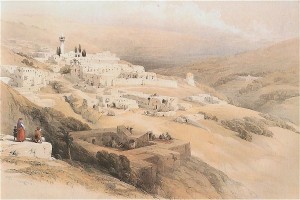North: Galilee and Golan
Safed: Artist’s Colony and Synagogues
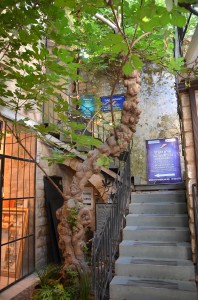
The Fig Tree Courtyard, so named for the Fig tree which has been nursed back to health by local developers now is home to several art galleries. Formerly it was a family residence and it still contains a water cistern, visible in the courtyard.
Don’t miss Safed! Whether it’s the mountain air, the insights into Jewish mysticism, the unique synagogue architecture or the unparalleled art and Judaica, everyone enjoys walking the stone covered alleys of this Upper Galilee town.
We’ll descend past Messhiah’s Alley, find our favorite eatery in the square, and then descent towards the Ashkenazi Ari synagouge. After stopping there to gain insight into Kabbala (Jewish mysticism) we continue towards the art colony and visit the Abuhav Synagogue as well. Here in the middle of the 16th century a Jewish community flourished and set an example due to its caring nature and it’s scholarship in practical halakha (Jewish Law) as well as the 1900 year old Kaballa.
The Fig Tree Courtyard, see photo above, is named for the Fig tree which has been nursed back to health by local developers. The courtyard is now home to several art galleries. Formerly the site was a family residence and it still contains a water cistern, visible in the courtyard.
Capernum
Capernum is the place to come when you want to see how cultures borrow from each other. It’s a confusing place. Forunately we can make some sense of it while we sit in the shade under the large shade-giving trees that grow next to the sites ancient synagogue.
Back in the days of Jesus this place was a mid-sized fishing town of some 1500 people. Certainly large enough to merit having it’s own synagogue. In that time synagogues were used as places of congregation by the community, places to learn and make decisions. A couple of generations later, after the destruction of the great Temple in Jerusalem they would begin to function as places of worship to the God of Israel, since the option of making pilgrimage to the Temple was no longer a possibility.
Here look at how the Jews of the Byzantine era decorated their synagogue, what evoked their pride. When we enter the synagogue do we feel like we’ve been in this type of building before? Even if we’ve never been in a synagogue before, it seems familiar to us. Why?
We pass by the remnants of original neighborhoods from 2000 years ago and arrive at the original home of St. Peter, where Jesus lived during his ministry. It sits under the modern church. Consider this small space and learn about why it had to be so small, then how it was enlarged.
Before leaving look at the statue of St. Peter and try to identify the symbols that confirm for us that the figure is indeed Peter.
Mt. of Beatitudes
The Beatitudes (blessings) were taught by Jesus and, according to St. Augustine, are the basis of Western civilization.
Here the inspiring Italian architect, Antonio Barluzzi, designed a simple yet meaningful church, set amidst one of the most beautiful sites in the country. The views here take in the entire Sea of Galilee, and the hills of the lower Galilee and Golan Heights which surround the lake. Closer at hand we view orchards. As we walk about the grounds we spy shaded areas suitable for contemplation or groups celebrating the mass. Call the church in advance to make a reservation at one of the sites for your group.
The site of the church is itself ahistorical, simply the place, near the lake, where the Franciscans were able to purchase land to celebrate the Sermon on the Mount. Nevertheless it is in close proximity to a site, just down the hill, celebrated by the early Byzantine Christians as the place where Jesus did deliver the sermon. However we now understand that Jesus would have delivered the same ideas presented in the famous sermon many times during his ministry in Galilee. Perhaps on the particular occasion of the delivery on a high spot above the lake the ideas were best received and remembered associated with that place.
Tabgha (Miracle of the Multiplication of the Loaves and Fishes)
Often, when we approach the northwestern corner of the Sea of Galilee, the so-called Christian Quarter of the lake, it is here at the Church of the Miracle of the Multiplication that we make our first stop celebrating the ministry of Jesus. The church is modern and small but it evokes the feeling of a much older Byzantine-era church over which it is built and which it is designed to emulate. Stop outside the church in its atrium, where fish swim in a small pond, and contemplate the purpose of this space, just outside the church itself. Inside the church view the original Byzantine-era mosaics and, once you identify their theme, ask yourselves why in this case they were used to represent the theme of this church.
After some time here, take a walk outside to the main road and turn right. Less than five minutes away you’ll arrive the second site of Tabgha, the Church of Peter’s Primacy. Here you’ll be able to walk right down to the water’s edge, a highlight of any tour in the Galilee.
Cana Wedding Church
 Obviously we at WaterandWineTours like the imagery and metaphors associated with this town and the events portrayed here in the New Testament.
Obviously we at WaterandWineTours like the imagery and metaphors associated with this town and the events portrayed here in the New Testament.
In Cana, the New Testament tells us, Jesus performed his first public miracle. Despite initial reservations about revealing his powers at an inappropriate time, Jesus ultimately fulfills the fifth commandment to give respect to his parents, by fulfilling his mother Mary’s will. Today we can buy Cana Wedding Wine in the bustling town’s main street or on the smaller side street leading to the Churches which celebrate the event. Some couples come to Cana to renew their wedding vows.
Nazareth
Philip found Nathanael and told him, “We have found the one Moses wrote about in the Law, and about whom the prophets also wrote—Jesus of Nazareth, the son of Joseph.” “Nazareth! Can anything good come from there?” Nathanael asked. “Come and see,” said Philip.
John 1:45-46
In the time of Jesus, scholars believe that Nazareth was a poor Galilean village numbering about 400 souls. The people lived in caves, a mark of their poverty. The women folk, following the time-immemorial custom in the Middle East, would gather water at the town spring, situated several hundred meters from the towns cave dwellings.
A hundred years ago Nazareth had 7,000 residents. But today it is the largest Arab town in Israel, with a population of greater than 72,000.
Tzippori (Sepphoris)
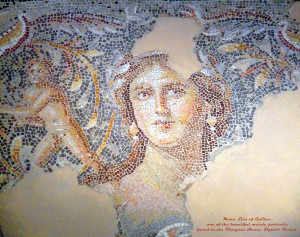
The so-called :Mona Lisa of the Galilee” can be seen in the remains of a mansion situated on the highest hill in ancient Tzipori.
Jewish sources claim that Tzipori, which means bird in Hebrew, gets its name because the town soars from its position like a bird on the top of a hill. Roman aquaducts, beautiful mosaics from a wealth of cultures, a synagogue with both Jewish and pagan themes in its floor mosaic, an amphitheatre and Roman Cardo combine to make this Lower Galilee a source of fascination for lovers of anitquity. Tzipori revolted against King Herod in the first century BC and paid a terrible price. But Tzipori, a mixed Jewish and Pagan city wisely chose to sit out the Great Jewish Revolt against the mighty Romans in the first century. By the end of the second century it had become a preeminent site of Jewish scholarship; the most powerful Jew of the time, Rabbi Yehuda HaNasi chose to make this his home as he edited the Oral Law (Mishna) first handed down in part at Mt. Sinai to Moses, 1450 years before. A Christian tradition places the birth of Mary, mother of Jesus, here. The site is only six kilometers from the hometown of Jesus, Nazareth, and scholars hypothesize that Joseph would take a young Jesus with him to work on building projects in the bustling town, over the ridge from tiny Nazareth.
Bet Shearim
Chiseled into the white chalk rock at the edge of the lower Galilee, Bet Shearim stands as a testament to the Jewish people’s attachment to the land of their forefathers. Bet Shearim is filled with expensive sarcophagi belonging to wealthy Jews from far and wide. Diaspora Jews who could not or would not come to spend their living days in the Holy Land often chose to spend eternity buried in it and the result are splendid relics, found here, from the 2nd to the 4th centuries. One of Judaism’s most important scholars, Rabbi Yehuda HaNasi (Judah the Prince) who edited the Mishnah, is buried here and this only added to the prestige of the site in Talmudic times.
Yardenit (Jordan River Baptism Site)
The Jordan River gives life to its surrounding population. The name in Hebrew is Yarden. It’s sound is so pleasing that many of us name out children (both boys and girls) after it. It evokes feelings of life and beauty. It represents beginnings. The Israelites cross through its dry river bed into their long-promised home (Joshua 3:16-17). The story of Jesus begins in the river in the Gospel of Matthew (1:9).
When we arrive here at the southern side of the Sea of Galilee we are witnessing the beginning of the “lower” Jordan river. From here, the stream will meander at a painfully slow rate south. As it travels it eventually demarcates the border between the modern states of Jordan and Israel. Then it demarcates the border between the West Bank and the state of Jordan. Finally it flows into the Dead Sea. Along the way we pass several significant events from Biblical history including the crossing of the Jordan by the Children of Israel (Joshua 3:1-4:24) at Gilgal.
Where did John the Baptist baptize Jesus? Somewhere along this course of river. Near the Sea of Galilee or near the Dead Sea? Scholars will disagree. Some even believe it too place north of the Sea of Galilee along the Upper Jordan River. Nevertheless the members of Kibbutz Kinerret, the second kibbutz in the history of the modern Jewish settlement of the land of Israel, have established an excellent site for Christians who wish to be baptized again. Christian doctrine differs regarding the appropriateness of this action. Catholics remain opposed to a second baptism after the initial one taking place in childhood but other streams of the faith advocate for it. What cannot be denied is the powerful emotional and spiritual significance of the baptisms which take place here every day and which are a highlight of a stop here.
Tel Dan
Tel Dan is the ideal destination in the north. It’s got it all: biblical archeology, water, trails, beauty, a view of Lebanon and an important piece of the history leading up to the Six Day War. It’s also close to excellent eateries. Try not to miss Dan.
Metulla
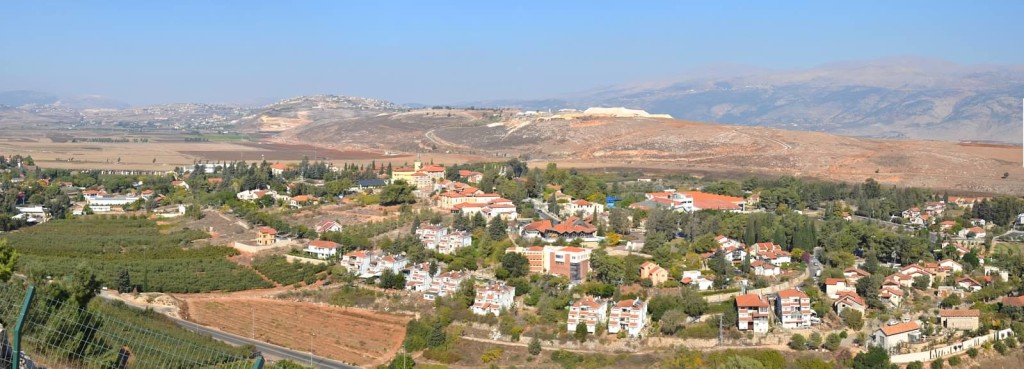
Metulla, built on lands built for Jewish farmers by the Baron de Roshschild in the late 19th century, became the northernmost town in the state of Israel. It sits right on the Lebanese border, hard up against territories controlled by the Lebanese Shiite political party Hizbullah which is associated with Iran and is committed to Israel’s destruction.
The Golan Heights – Vistas and Pioneers on the Frontier
The volcanic Golan Heights is Israel’s northeastern border. One gets to the Golan by traveling from the Hula Valley east across the Upper Jordan River or ascending east from the Sea of Galilee. To its east the Golan borders Syria. To its south is the small Yarmuk River and the Hashemite Kingdom of Jordan. On its northern edge rises Mt. Hermon to a height of 9,200 feet. Israel only holds 6% of the Hermon. The rest of the Hermon is held by Syria and Lebanon.
Jewish roots on the Golan date back to biblical times when the Israelite tribes of Gad, Reuven and part of Menashe conquered an area called the Bashan from the Amorite tribe. Part of the Bashan is today’s Golan Heights. Archeologists have discovered remains of 34 Jewish synagogues, houses or worship, in the Golan. These remains date from Roman and Byzantine times.
Um Al Kannatir Ancient Synagogue
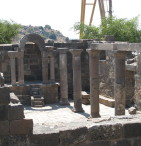
The famous explorers Laurence Oliphant and Gottlieb Schumacher discovered the site in 1884. This site, once used to produce textiles due to the presence of a spring here, houses the remains of a large 6th century synagogue. The building measures over 2500 square feet and almost 40 feet high. It features a stone chiseled figure of an eagle, an ancient Jewish artistic symbol. The structure collapsed during the terrible Golan earthquake of the year 749.
Golan Heights Welcome Center in Katzrin
When in Katzrin, capital of the Israeli Golan, stop by the Katzrin Industrial Center and visit the Golan Magic welcome center to watch a beautiful film presentation of Golan scenery on a 180 degree panoramic screen. Later you’ll absorb Golan history watching history unfold on a huge model of the Golan. The welcome center is housed next to the Golan Brewery and is within a two minute walk to The Golan Winery and the Golan Olive Oil Mill. In Katzrin itself, just a minute’s drive, you may visit the Katzrin Antiquities Park and the Golan Antiquities Museum, both located in Katzrin.
Golan Heights Winery
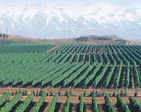
Good soil, climatic conditions and winemaking skills combine to create a Golan success story. The winery’s first vintage was released in 1984 and it now produces over six million bottles of wine each year. It has won 58 international gold medal wine awards two international best-winery trophies. You can choose to take the winery tour or just experience the wine-tasting.
Golan Heights Jeep/ATV/Tomcar Tours
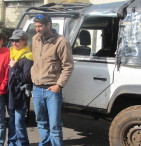
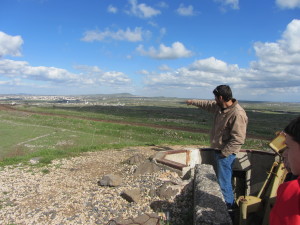 Jeeps can take you off the beaten track. You’ll experience Golan wildlife and the border country with Syria in a way that even most locals don’t get to experience. Or, explore the hills and lowlands around the Jordan River or the Sea of Galilee where wildlife abounds and Israeli farmers produce award winning produce.
Jeeps can take you off the beaten track. You’ll experience Golan wildlife and the border country with Syria in a way that even most locals don’t get to experience. Or, explore the hills and lowlands around the Jordan River or the Sea of Galilee where wildlife abounds and Israeli farmers produce award winning produce.
When we ask tourists about their trip highlights Golan Jeep tours always make the list. As tour guides we also look forward to these off the beaten track adventures. We utilize local driver-guides who live in the area and know the terrain and history intimately as they live in the region, have served in the army here and worked locally as cowboys and farmers.
How to put together your Water and Wine tour of Israel
On our Water and Wine Tours website you will not find standard tours.
Don’t worry. We’ll make sure that you experience the must-see sites in the country. But we’ve also included a comprehensive list of sites, by region for people with many different interests, with enough description for you to ascertain whether it’s the sort of place you want to spend your time.
You know your budget and how much time you have to spend here.
So here are our recommendations, based on years of leading all sorts of tours throughout the country.
- Ask yourself if this trip is a vacation. Do you want to see sites but also feel really relaxed at the end of each day? So that you don’t need a few days of sleep upon your return home? If this is the case then try to restrict yourself to three major sites per day. Between the sites, travel and lunch 8-10 hours will pass quickly.
- If you’re more inclined to describe yourself as a pilgrim or someone who wants a survey of sites, then expect to visit up to five sites per day. You’ll be spiritually satisfied but you’ll also need to get a good night’s sleep every night.
“A life changing event”
"Our guide, Zach Levin, made the trip a life changing event for both Linda and me. He was very sensitive to our needs and went out of his way to make sure we got the full Israeli experience. Zach is very knowledgeable and his passion and enthusiasm contributed to our getting the full flavor of the country."
Harvey and Linda W
Your Tour Guide
Water & Wine Tours specializes in individually tailored tours catering to the interests of its clients. Our founder, Zach Levin, is an experienced, licensed tour guide who majored in Middle Eastern Languages and Cultures at Columbia University in the City of New York.
Our tour guides make the history and culture of Israel come alive. They understand that the customer is always right and want you to experience an unforgettable Israel. We’ll take you to places which you’ll love and never forget. When you need to be left alone we’ll sense it. When you need an extra hand we’re there for you.

